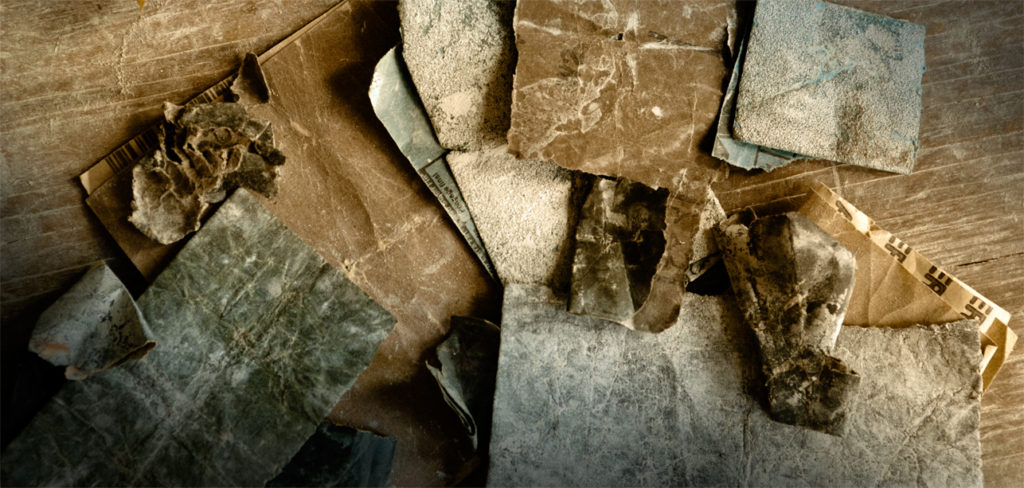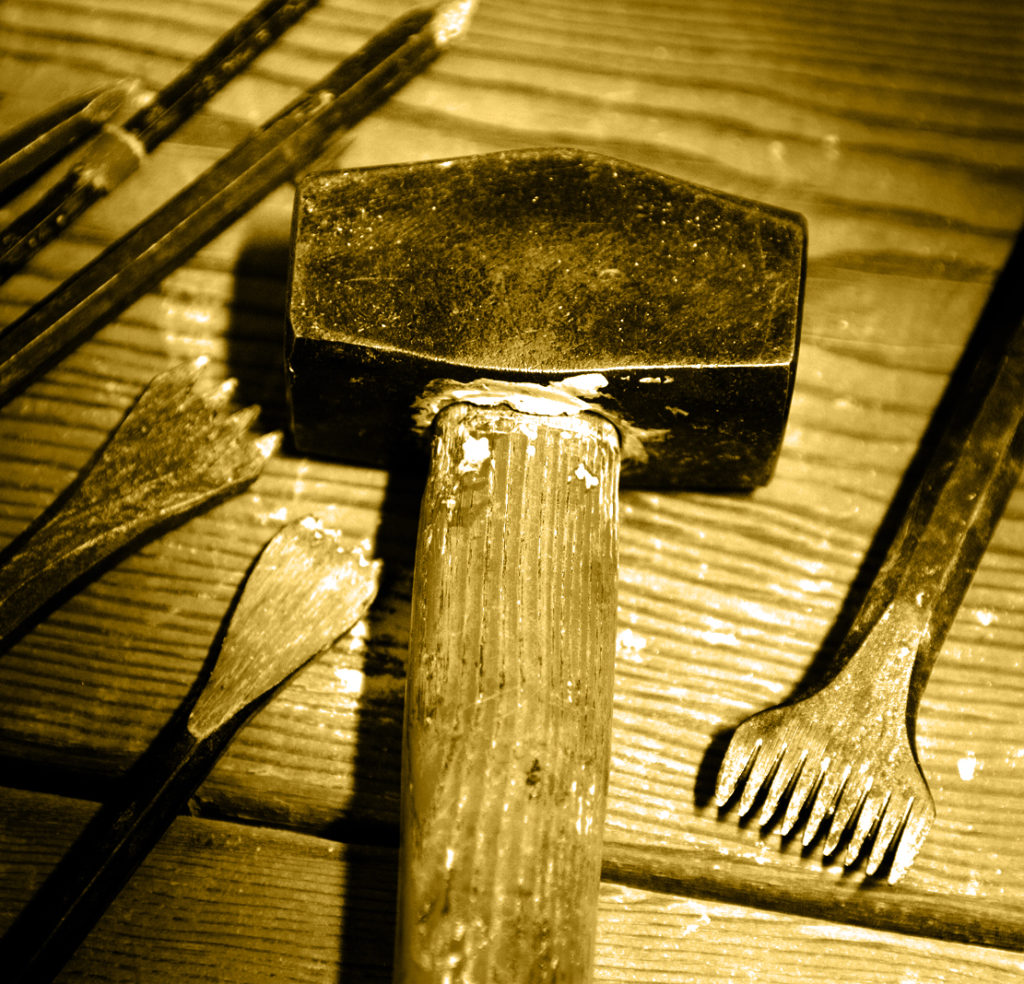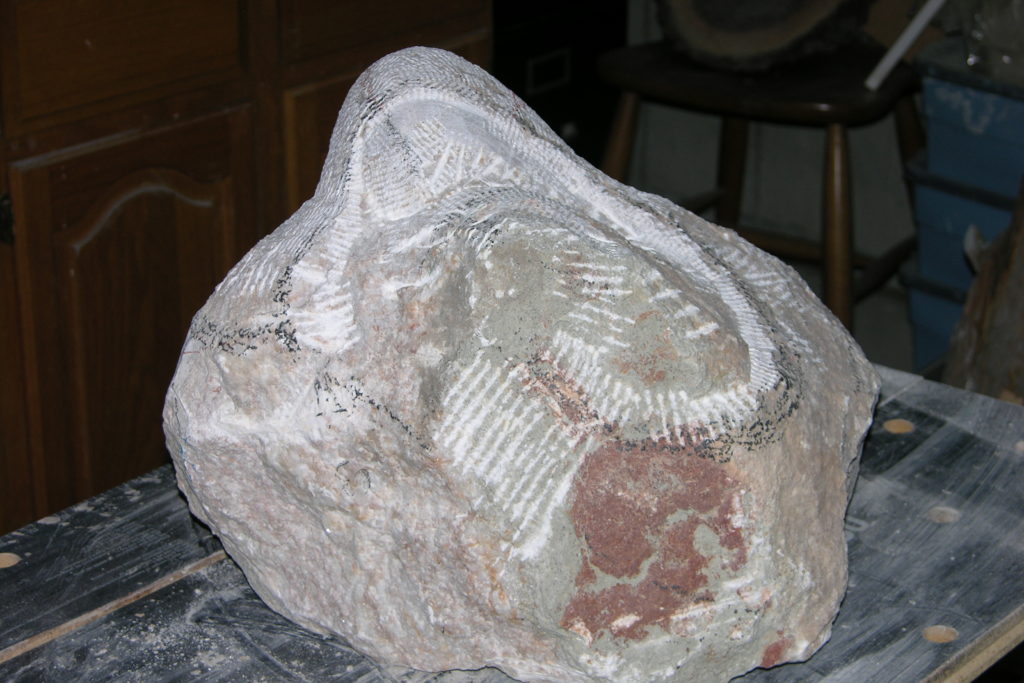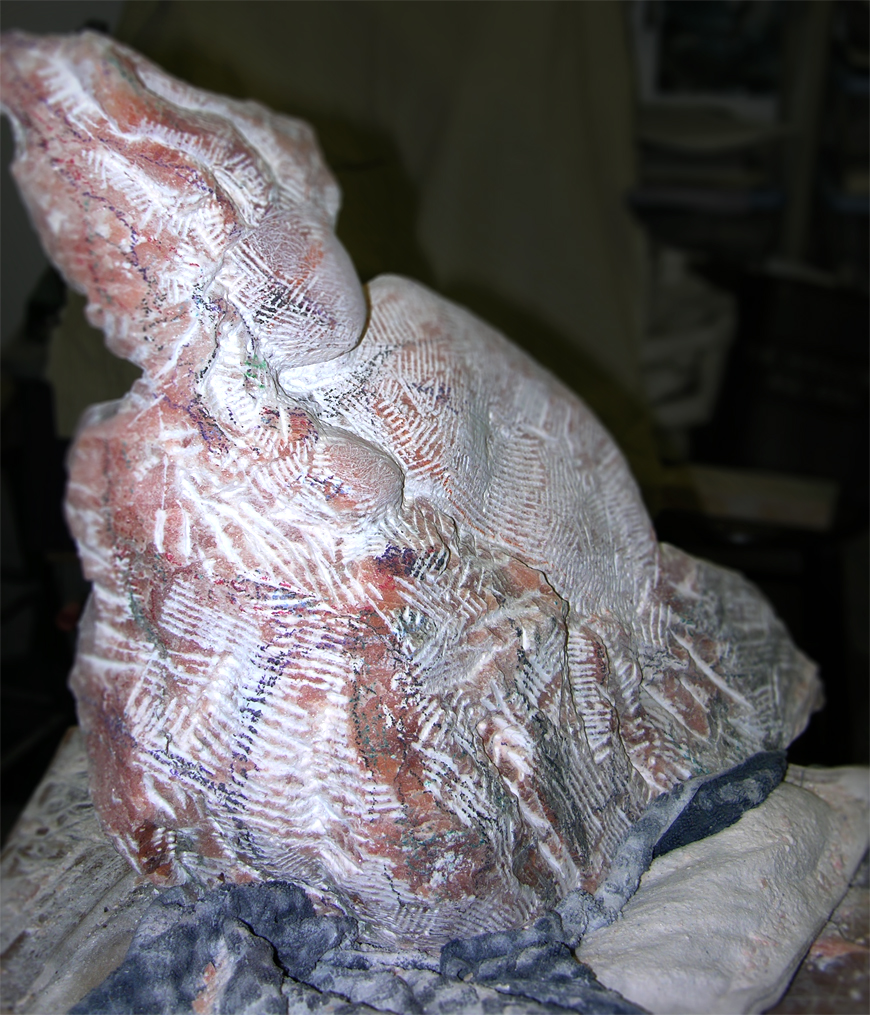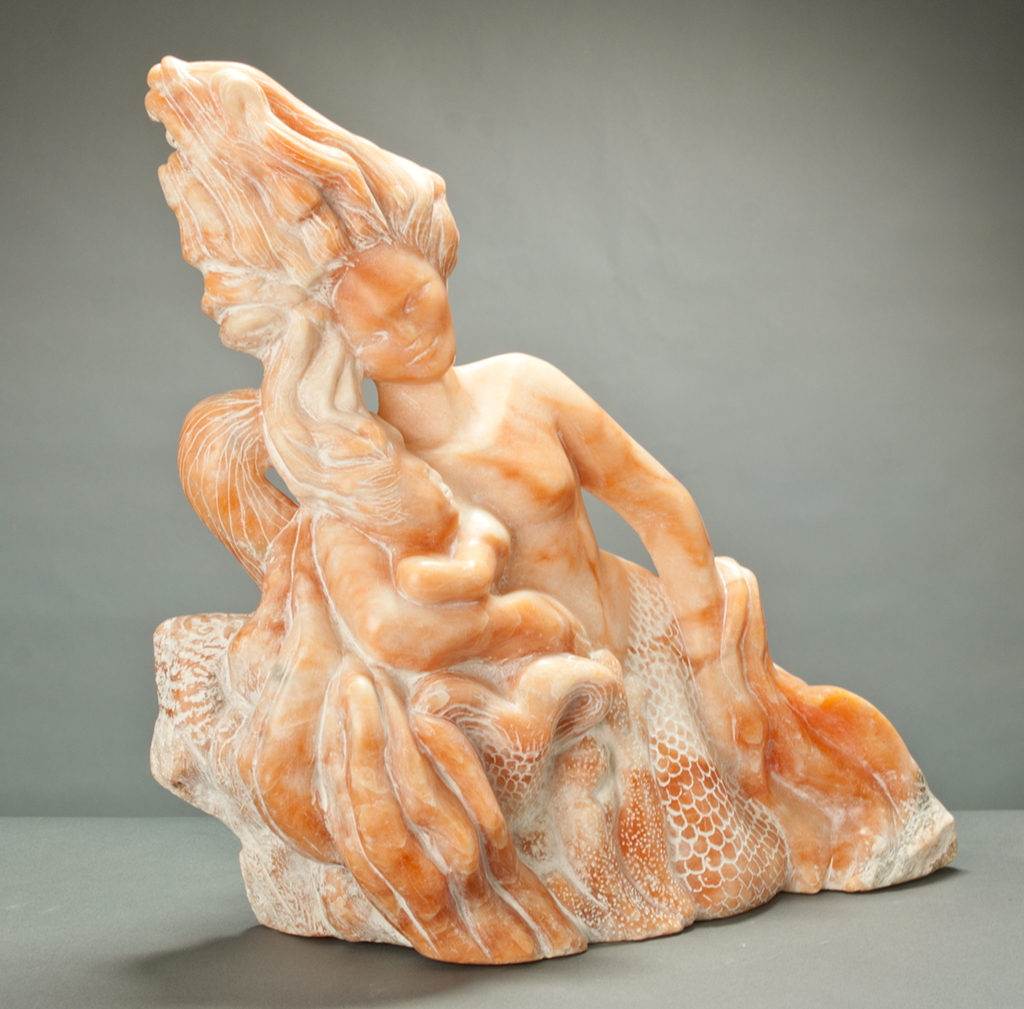Direct carving is as old as Humankind. Without a reference, but rather an understanding of what needed to be made, we picked up a piece of wood or stone and carved bowls, tools and totems. I believe it is an instinctual ability in all of us to find what is hidden in organic materials. Naturally, it takes practice, patience and discipline to master the method.
Tools for carving are simple: hammer, point and tooth chisel for stone, and mallet and gouge for wood. There are numerous suppliers who make it easy to accumulate a variety of tools . Rasps and files come in handy in the refining stage and sandpapers are used in the finishing stages before sealing or polishing with waxes or oils.
Direct carving requires making marks as high-points on the piece of stone or wood.
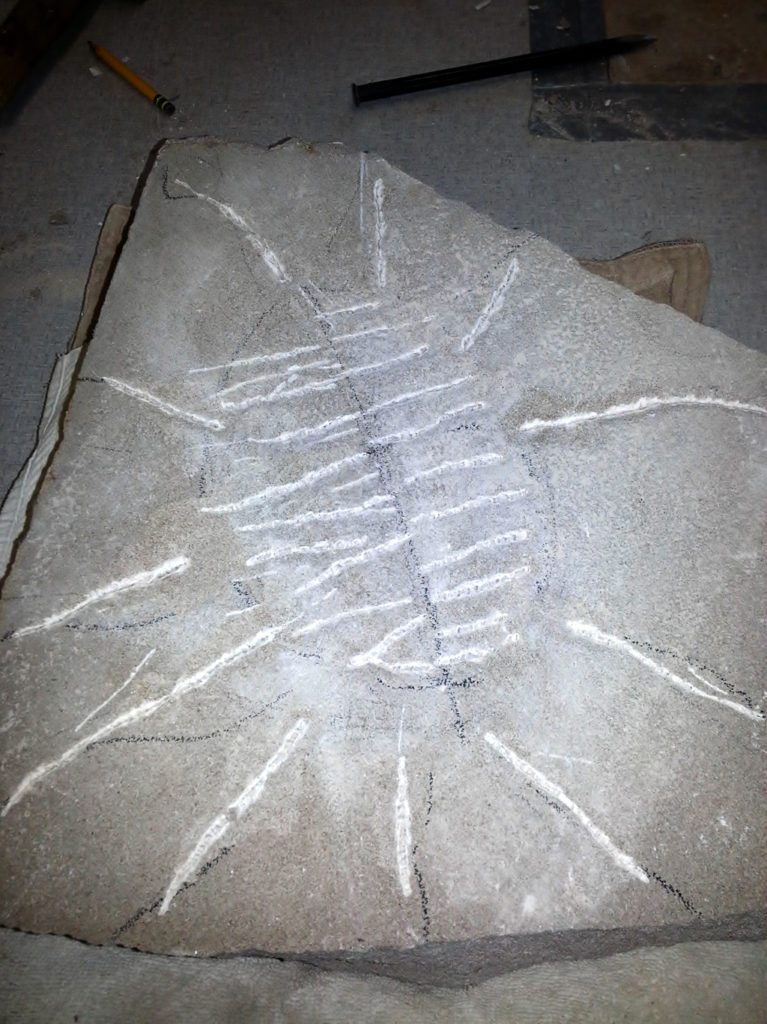
“Roughing out” in softer stones requires leaving room for finish dimensions. The carver soon realizes “less is more “as more space and flexibility is revealed once he or she begins to “open up” the piece. Roughing out both “Embrace ” and “Swept Away” ( below) shows much of the original mass was kept while chisel marks are refining the shape of the piece found naturally in the stone.
Shaping the piece is achieved mostly with tooth chisels in stone and while gouges of various sizes and shapes are used with wood.
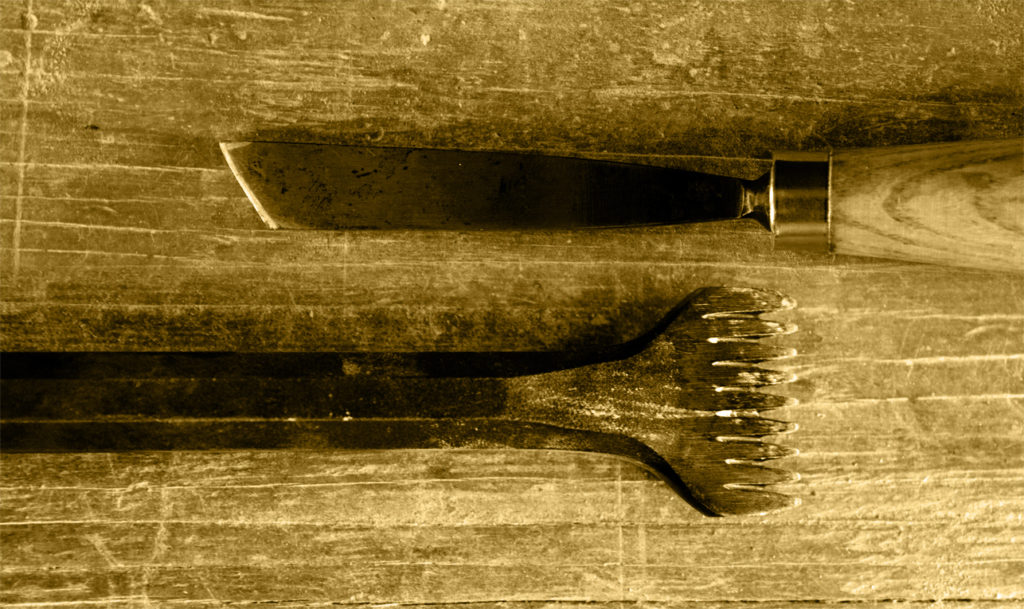
Both wood and stone can be finished with a textured surface or with a fine polish. “Swept Away” and ” Pisces” show both methods incorporated, while “Man in the Moon” is finished with textural gouge marks.
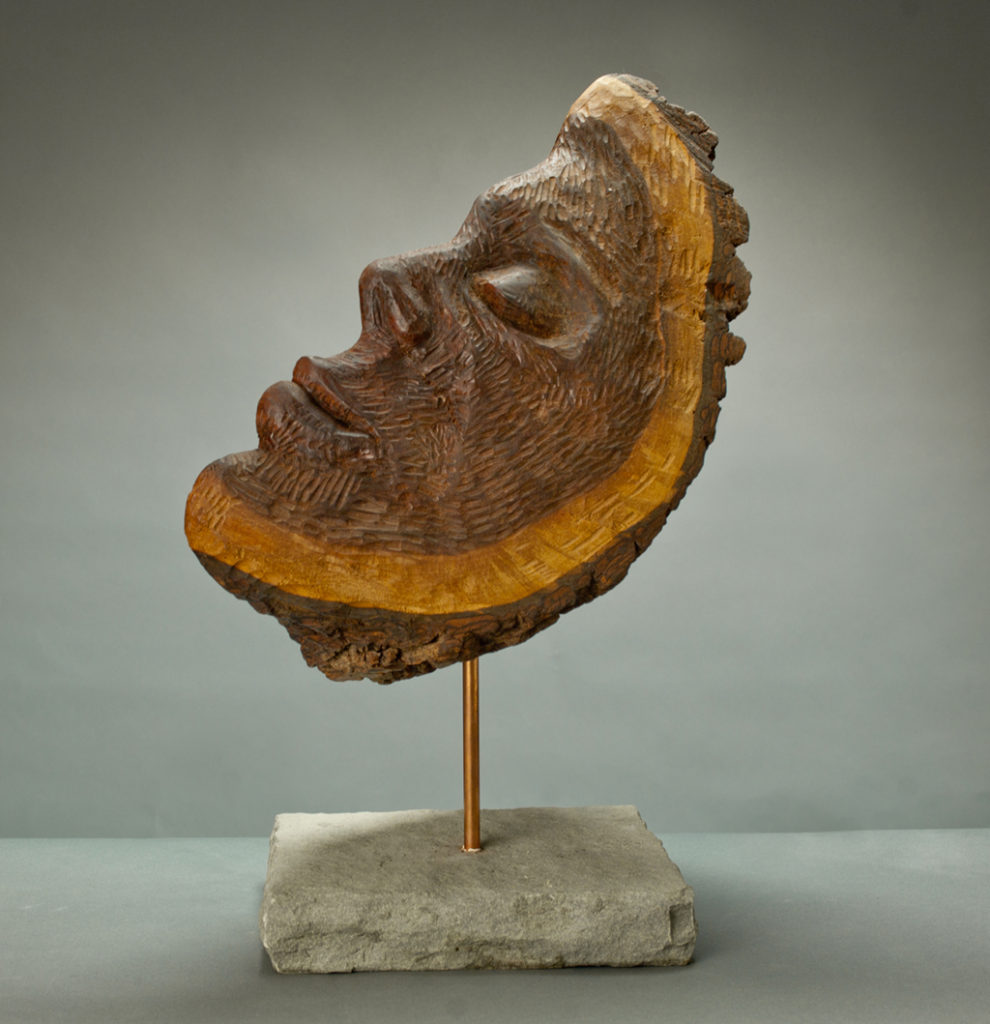
Polishing stone or wood is a labor of love and it pays off with the natural beauty of each unique piece of stone or wood. I think there is no better way to feel grounded and counter the overwhelming world of technology than carving directly into a material made over eons (stone) or generations (trees) .
